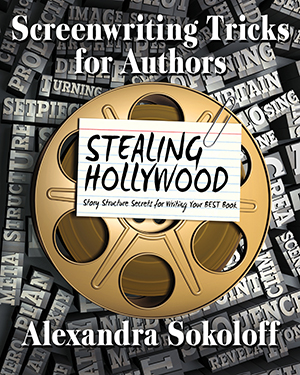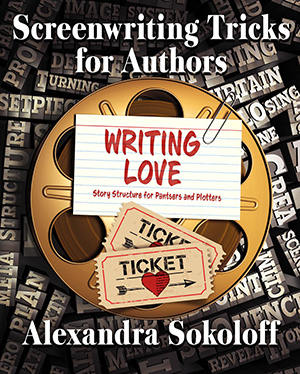We’re working with Act II: Part 1, so it’s time to do another post on STORY PATTERNS – which you really start to see at work in this second quarter of a book or script. The KIND of story, or STORY PATTERN, is different from genre or subgenre.
There are hundreds of story patterns in books, movies, TV and plays – and when you start consciously spotting them, it can seriously up your story structure game.
Here are just a very, very few examples,
-
The Big Lie
-
MacGuffin
-
Road Trip
-
Fish Out of Water
-
Wolf in the Fold
-
Dark Academia (includes Campus Mystery)
-
Three Tasks
-
Three Brothers, Three Sisters or Three Siblings
-
Sociopolitical commentary
-
Buddy story
-
Lude Comedy
-
Trapped in the Family Business
-
Cinderella
-
Hey Kids, Let’s Put on a Show
-
Eat the Rich
-
The Long Con
-
Unreliable Narrator
There’s a much longer list of these patterns, with examples and discussion, in Stealing Hollywood and Writing Love: “What KIND of Story is It?”
And in these previous posts:
-
and especially:
I’ll be honest – this might feel like advanced work to some of you, and if it’s confusing, don’t worry about it right now! As they say in 12-Step programs, “Take what you like and leave the rest.”
But in many ways, Story Patterns can be the most useful thing you ever learn about story structure. If the idea of Story Patterns clicks with you, it can really be a huge and helpful shortcut to a much stronger and very likely more commercial book or script.
So if you’re interested, I suggest you read through the lists of examples in those above chapters and posts, then take your own MASTER LIST of top ten movies and try identifying the story patterns working in each (remember, there will almost always be more than one).
Then identify the story pattern/s you are writing in your own book or script.
(I’m happy to help you work this out if you leave a question or a list in the Comments)
Once you’ve identified your own Story Pattern/s – it’s always astonishingly useful to watch three or four movies of this story type in a row, to understand how the pattern can help you organize your own story. and what elements the audience or reader expects and loves from this kind of story.
So you can make sure to be hitting those elements in your own story, and even give us the new or deeper take that will make your story a classic. Right?





